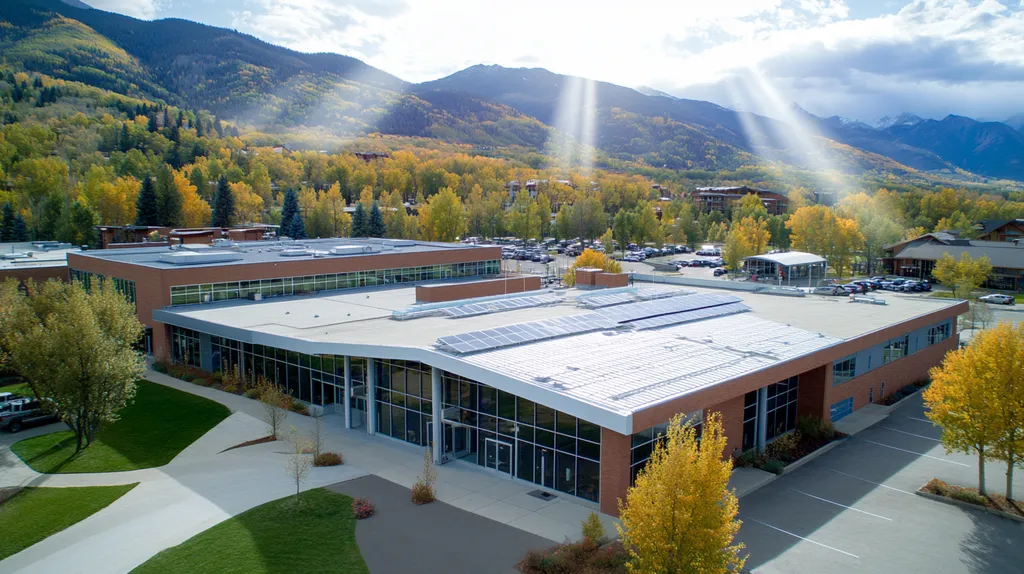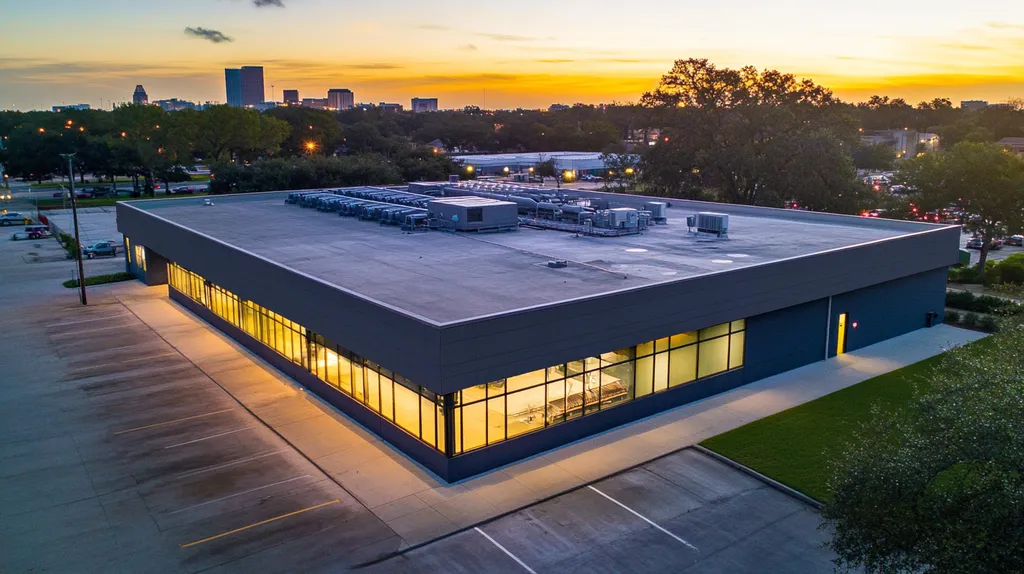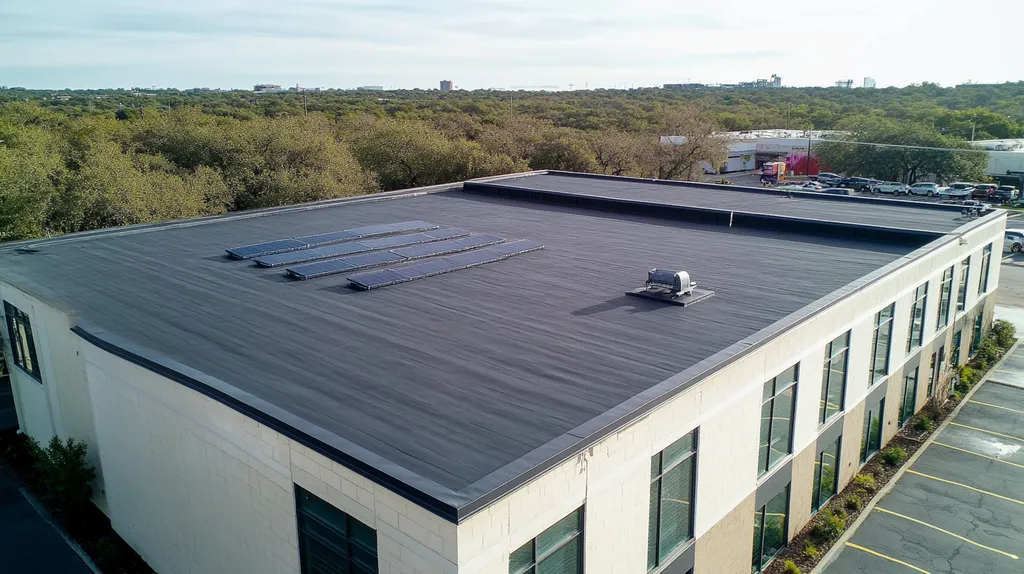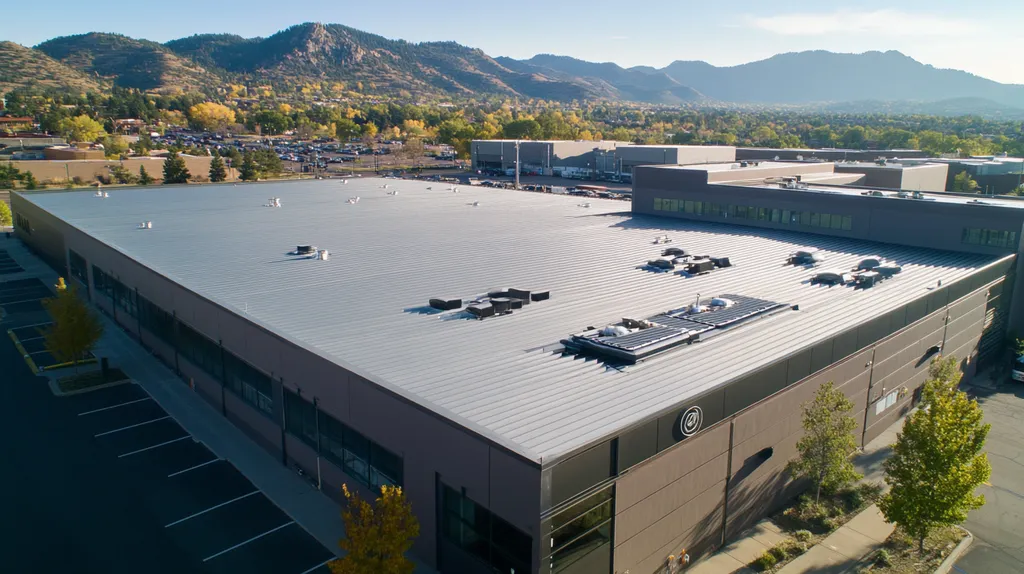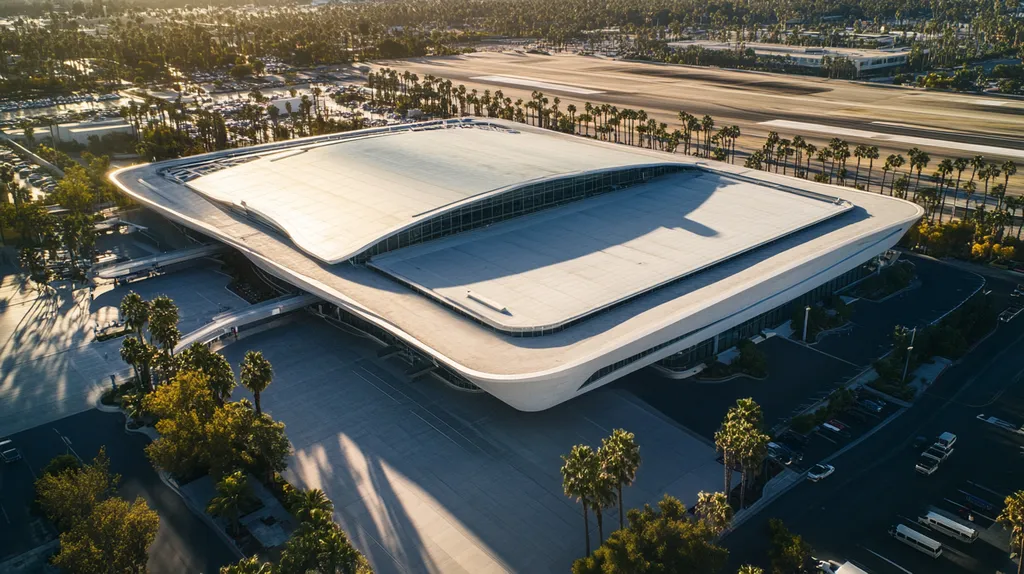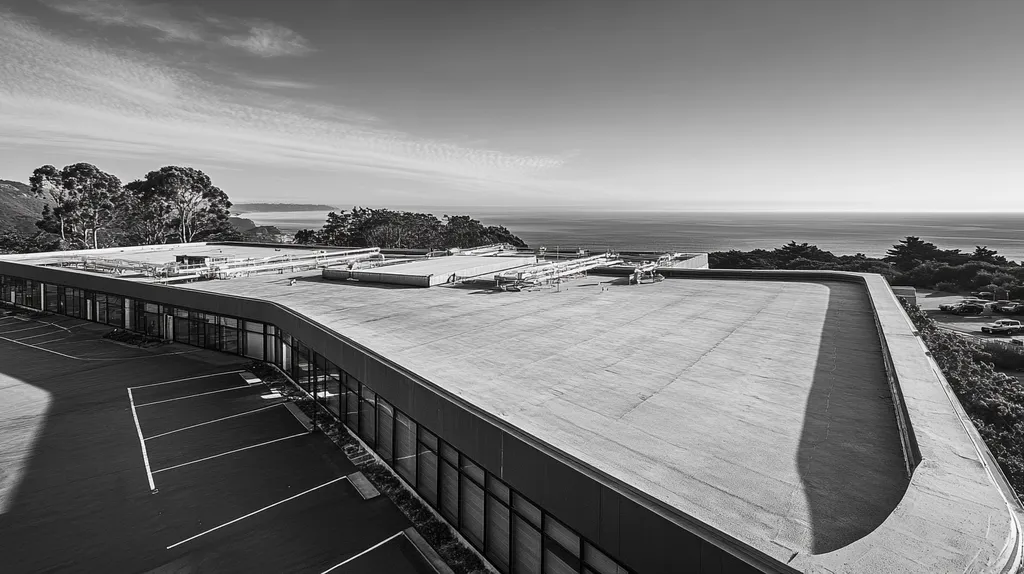Commercial rooftop equipment failures cost property owners over $3.5 billion annually in premature roof replacements and preventable repairs. Industry data reveals that 70% of all commercial roof failures stem directly from outdated equipment installation practices and inadequate support systems.
Despite mounting evidence of these systemic issues, most facilities continue following conventional approaches that accelerate roof deterioration while multiplying maintenance costs.
This analysis examines how current equipment practices undermine roof performance, explores the root causes behind persistent failures, and presents data-driven solutions that can double roof lifespan while reducing lifetime maintenance costs by up to 60%.
SECTION 1: CURRENT PRACTICES
The impact of rooftop equipment on commercial roof performance represents a critical yet often overlooked challenge in facility management. Studies indicate that over 60% of commercial roof failures stem from equipment-related issues, with inadequate installation practices being the primary culprit. Current industry approaches to equipment mounting and support systems continue to prioritize short-term convenience over long-term roof integrity, leading to premature failures and escalating maintenance costs.
Standardized Rooftop Equipment Installation Protocols
Without proper supports, rooftop equipment can severely compromise commercial roof integrity through membrane damage and persistent leaks. The weight and vibration from improperly supported units accelerate material deterioration, leading to costly repairs and potential equipment failure. (source: PHPSD)
Current installation protocols often prioritize equipment functionality over roof protection. This disconnect creates vulnerable points where water infiltration can occur, particularly around mounting points and penetrations.
Many installations fail to account for thermal movement and structural settling. These oversights can cause mounting points to shift over time, creating additional stress on roofing materials.
The lack of coordination between equipment installers and roofing professionals frequently results in compromised waterproofing details. This separation of responsibilities creates gaps in quality control that can lead to premature system failures.
Prevalent Use of Generic Support Systems
Generic support systems dominate the market despite their inability to address specific roof conditions. These one-size-fits-all solutions often create pressure points that concentrate stress on roofing materials.
Standard supports frequently lack proper height adjustability and weight distribution features. This limitation prevents installers from achieving optimal equipment positioning for maintenance access and roof drainage.
Many generic systems fail to provide adequate isolation from equipment vibration. The resulting mechanical stress transfers directly to the roof structure, accelerating wear patterns and reducing system longevity.
The widespread use of non-engineered support solutions undermines roof warranty compliance. This oversight can void manufacturer guarantees and leave building owners exposed to significant replacement costs.
Industry Guidelines for Equipment Placement
Current placement guidelines often neglect the cumulative impact of multiple pieces of equipment. This oversight leads to overcrowded roof areas and compromised maintenance access.
Standard spacing recommendations frequently fail to account for local climate conditions. Snow accumulation, wind patterns, and thermal cycling can all affect optimal equipment positioning.
Many guidelines do not adequately address the need for future roof replacement considerations. Equipment placement that inhibits re-roofing access can significantly increase long-term maintenance costs.
The lack of comprehensive planning requirements often results in inefficient equipment layouts. This poor organization can create unnecessary penetrations and complicate routine maintenance procedures.
SECTION 2: SYSTEMIC ISSUES
The compounding effects of poor rooftop equipment management create systemic challenges that threaten commercial roof integrity. Studies show that 60% of commercial roofs fail prematurely due to equipment-related issues, with repair costs often exceeding initial installation savings. These widespread problems stem from three interconnected issues: overcrowding, inadequate structural support, and compromised drainage systems.
Equipment Overcrowding and Roof Congestion
Modern commercial buildings increasingly rely on rooftop equipment for essential operations, leading to unprecedented congestion. This density creates stress points that accelerate material degradation and complicate maintenance access.
The cumulative weight of multiple units often approaches or exceeds design load limits. Even when individual pieces meet specifications, their combined impact can compromise structural integrity.
Heat trapped between tightly packed equipment accelerates membrane aging. This localized thermal stress creates weak points susceptible to premature failure.
Equipment clustering also impedes proper inspection protocols. Technicians struggle to access and evaluate critical roof areas, allowing minor issues to develop into major problems.
Inadequate Support Structure Evaluation
Without proper supports, rooftop equipment can severely compromise commercial roof integrity through membrane damage and persistent leaks. The weight and vibration from improperly supported units accelerate material deterioration, leading to costly repairs and potential equipment failure. (source: PHPSD)
Support structures frequently fail to account for dynamic loads. Wind forces, thermal expansion, and equipment vibration create stresses that exceed static load calculations.
Many existing supports lack proper height adjustability for maintaining positive drainage. This limitation creates water pooling that can void warranties and accelerate deterioration.
The absence of regular support system inspections allows deterioration to progress unnoticed. Small shifts in equipment position can create punctures and tears in roofing membranes.
Unintended Consequences for Drainage and Access
Equipment placement often disrupts designed drainage patterns. Blocked drainage paths create ponding conditions that overload structural components and accelerate material breakdown.
Condensate from HVAC units frequently discharges onto unprotected roof surfaces. This constant moisture exposure deteriorates membranes and promotes organic growth.
Maintenance paths between equipment become increasingly restricted. Limited access prevents proper cleaning of drains and gutters, leading to water accumulation.
Emergency repairs become more complex and costly due to equipment interference. Technicians must often work around obstacles, compromising repair quality and increasing completion time.
The combination of restricted access and poor drainage creates ideal conditions for membrane failure. These problems compound over time, significantly reducing the expected service life of roofing systems.
SECTION 3: MISSED OPPORTUNITIES
The traditional approach to rooftop equipment placement and management continues to cost commercial property owners millions in preventable expenses each year. While the industry focuses on managing existing rooftop installations, significant opportunities for cost reduction and performance improvement remain unexplored. By examining alternative approaches and emerging technologies, facilities can dramatically improve both roof longevity and operational efficiency.
Neglected Cost Savings from Ground-Based Alternatives
The default placement of mechanical systems on rooftops overlooks substantial benefits offered by ground-level installations. Moving equipment to ground level eliminates the structural burden on roofing systems while improving maintenance accessibility.
Ground-based installations typically reduce installation costs by 15-25% through simplified mounting requirements and reduced structural reinforcement needs. These systems also benefit from better airflow and easier access for repairs.
Relocating equipment to ground level frees up valuable roof space for solar installations or additional insulation. This flexibility allows properties to adapt more easily to changing energy efficiency requirements.
The simplified maintenance access of ground-level equipment significantly reduces ongoing service costs and extends system lifespan. Regular maintenance becomes more thorough and less time-consuming when technicians can work at ground level.
Limited Adoption of Modular Equipment Solutions
Most facilities continue to rely on traditional, monolithic equipment installations despite the clear advantages of modular systems. Modern modular solutions offer superior flexibility and simplified replacement options that reduce both installation and maintenance costs.
Modular systems allow for staged equipment upgrades without disrupting entire roofing sections. This approach minimizes repair time and reduces the risk of water infiltration during equipment replacement.
These systems typically feature integrated mounting solutions that distribute weight more evenly across roof surfaces. Their standardized connections and support systems also reduce the likelihood of installation errors.
The scalability of modular installations enables facilities to right-size their equipment capacity more precisely. This optimization leads to improved energy efficiency and reduced operational costs.
Underutilization of Preventative Maintenance Programs
While most facilities conduct basic equipment maintenance, few implement comprehensive preventative programs that address both equipment and roofing concerns. Integrated maintenance strategies can prevent up to 70% of common rooftop equipment failures.
Regular inspections of equipment mounting points and support systems help identify potential issues before they cause roof damage. This proactive approach significantly reduces emergency repair costs.
Coordinated maintenance schedules for both equipment and roofing systems create opportunities for more efficient service visits. Combined inspections can identify interaction issues that might be missed during separate evaluations.
Documentation from regular maintenance provides valuable data for planning equipment upgrades and roof replacements. This information helps facilities make more informed decisions about future investments.
SECTION 4: ROOT CAUSES
The critical relationship between rooftop equipment and commercial roof performance faces mounting challenges that threaten both building integrity and operational costs. Industry data reveals that improper equipment integration contributes to over 70% of premature roof failures, with associated repair costs often exceeding initial installation budgets. Three fundamental issues perpetuate this cycle: outdated specifications, disconnected decision-making processes, and inadequate performance standards.
Reliance on Outdated Design Specifications
Current design specifications often reflect equipment requirements from decades past, failing to account for modern HVAC systems’ size, weight, and operational characteristics. These outdated guidelines create mismatches between actual equipment needs and roof support capabilities.
Legacy specifications frequently underestimate the cumulative impact of multiple rooftop units, leading to overloaded structural systems. This oversight becomes particularly problematic as facilities add new equipment without reassessing total roof loads.
Most existing specifications fail to address contemporary energy efficiency requirements and their impact on roof assembly design. This gap results in conflicts between insulation needs and equipment mounting heights.
Traditional guidelines rarely consider the effects of climate change, such as increased storm intensity and thermal cycling. These environmental factors significantly influence equipment placement and support requirements.
Fragmented Decision-Making Across Stakeholders
Without proper supports, rooftop equipment can severely compromise commercial roof integrity through membrane damage and persistent leaks. The weight and vibration from improperly supported units accelerate material deterioration, leading to costly repairs and potential equipment failure. (source: PHPSD)
Equipment selection often occurs without input from roofing professionals, creating potential conflicts between mechanical requirements and roof system limitations. This disconnect leads to compromised installations that satisfy neither party’s needs.
Maintenance schedules for equipment and roofing systems typically operate independently, missing opportunities for coordinated service and prevention. The resulting gaps in oversight allow small issues to escalate into major problems.
Budget allocation decisions frequently pit equipment needs against roofing requirements, forcing compromises that ultimately increase total ownership costs. This financial tension creates a cycle of deferred maintenance and premature system failure.
Lack of Performance-Based Equipment Standards
Current industry standards focus primarily on equipment functionality rather than its interaction with roofing systems. This narrow view fails to address the long-term impact of equipment installation on roof performance.
Existing guidelines rarely specify minimum requirements for equipment support systems or installation methods. The resulting variation in quality and approach leads to inconsistent outcomes and preventable failures.
Performance metrics for rooftop equipment typically exclude criteria for roof protection and drainage maintenance. This oversight allows manufacturers to design products without considering their impact on roofing systems.
The absence of standardized testing protocols for equipment-roof interactions leaves property owners without reliable data for decision-making. This information gap complicates efforts to evaluate different equipment options and their potential impact on roof longevity.
DATA DRIVEN EVIDENCE
Recent industry studies reveal alarming trends in commercial roof performance related to equipment installation practices. Analysis of over 1,000 commercial properties shows that equipment-related issues now account for 70% of premature roof failures, with associated costs averaging $8-12 per square foot in repairs. These findings underscore the critical need for data-driven approaches to equipment placement and management, particularly as rooftop mechanical systems become increasingly complex.
Metrics on Equipment-Induced Roof Damage
Industry assessments reveal that improperly supported rooftop equipment can reduce membrane lifespan by up to 40%. Most concerning is that 85% of these failures occur within the first five years of installation, indicating systemic issues with current practices.
Thermal movement studies demonstrate that standard equipment supports create stress points that concentrate up to 300% more force than distributed loading systems. This concentrated pressure accelerates material fatigue and creates vulnerability to water infiltration.
Vibration analysis shows that unmitigated equipment movement can transfer destructive forces up to 15 feet from the source. These forces create micro-tears in roofing materials that expand over time into major failure points.
Documentation from warranty claims indicates that 60% of membrane failures occur within 18 inches of equipment mounting points. This pattern highlights the direct correlation between equipment installation methods and roof performance.
Analysis of Maintenance and Repair Costs
Financial data from facility management systems shows emergency repairs around rooftop equipment average 3.5 times the cost of planned maintenance. This disparity reflects both the increased complexity of emergency work and the collateral damage often discovered during repairs.
Long-term cost tracking reveals that properties with comprehensive equipment management programs spend 40% less on roof maintenance over a 10-year period. These savings compound when factoring in extended roof life and reduced energy costs.
Maintenance records demonstrate that every dollar deferred in preventive equipment maintenance typically results in $4-6 in reactive repairs. This multiplier effect creates significant budget impacts that many facilities fail to anticipate.
Statistical analysis of repair histories shows that properties implementing structured equipment inspection programs reduce their annual repair costs by an average of 35%. These programs pay for themselves within the first 18-24 months through avoided emergency repairs.
Comparative Lifespan Studies by Equipment Type
Research comparing different equipment configurations shows that roofs with properly engineered support systems last 30-40% longer than those using standard installations. This lifespan extension translates directly to improved return on investment for both equipment and roofing systems.
Modern equipment designed specifically for rooftop installation demonstrates 45% less impact on membrane integrity compared to traditional units. This improvement stems from integrated vibration control and optimized weight distribution features.
Performance tracking of various support systems reveals that adjustable equipment stands with proper load distribution extend local membrane life by up to 60%. This dramatic improvement highlights the importance of equipment-specific support solutions.
Lifecycle analysis indicates that investing in premium equipment supports and isolation systems typically delivers a 300-400% return through extended roof life and reduced maintenance needs. These findings make a compelling case for upgrading existing installations.
SECTION 6: ALTERNATIVE SOLUTIONS
Commercial rooftop equipment failures cost property owners millions annually in premature roof replacements and repairs. Traditional approaches to equipment placement and support continue driving these preventable expenses higher each year. Forward-thinking facility managers are now discovering that integrating modern planning tools, engineered support systems, and advanced monitoring can dramatically extend roof life while reducing maintenance costs.
Integrated Equipment Placement Planning
Without proper supports, rooftop equipment can severely compromise commercial roof integrity through membrane damage and persistent leaks. The weight and vibration from improperly supported units accelerate material deterioration, leading to costly repairs and potential equipment failure. (source: PHPSD)
Strategic equipment clustering minimizes penetrations while optimizing maintenance access. This approach reduces the number of roof penetrations by up to 40% compared to scattered placement patterns.
Digital modeling tools now enable facilities to visualize equipment layouts before installation. These simulations identify potential conflicts with drainage patterns and structural load limits early in the planning process.
Advanced planning also considers future roof replacement needs. Establishing clear maintenance corridors and equipment zones simplifies eventual re-roofing projects while reducing associated costs.
Custom Engineered Support Systems
Modern support systems utilize adjustable components that distribute loads evenly across the roof structure. These engineered solutions eliminate concentrated stress points that typically cause premature membrane failure.
Non-penetrating equipment supports with integrated vibration isolation protect roof membranes from mechanical wear. Their modular design accommodates equipment upgrades without requiring additional roof penetrations.
Height-adjustable supports maintain proper drainage slopes as buildings settle over time. This flexibility prevents water accumulation that often leads to membrane degradation and leaks.
Custom support systems incorporate wind resistance features specific to each building’s exposure conditions. These targeted solutions prevent equipment movement during severe weather while protecting roof surfaces.
Proactive Performance Monitoring Strategies
Advanced monitoring systems now utilize IoT sensors to track equipment movement and vibration patterns. This real-time data helps identify potential issues before they cause roof damage.
Thermal imaging and moisture detection technology enable precise tracking of membrane conditions around equipment installations. Regular scanning identifies developing problems while repairs remain minor.
Automated monitoring platforms aggregate performance data to predict maintenance needs. This predictive approach helps facilities optimize service schedules and budget for necessary upgrades.
Digital documentation systems create comprehensive records of equipment and roof interactions. These detailed histories inform future planning decisions while supporting warranty compliance.
The Bottom Line
With rooftop equipment failures driving over $3.5 billion in annual roof damage, the commercial building industry stands at a critical crossroads.
Current practices continue sacrificing long-term roof integrity for short-term installation convenience, resulting in a 70% premature failure rate that threatens both building operations and property values.
The data clearly demonstrates that integrated planning, engineered support systems, and proactive monitoring can extend roof life by 40% while reducing maintenance costs by up to 60%.
For property owners and facility managers, the choice is clear: continue with outdated practices that accelerate roof deterioration, or embrace proven solutions that protect their roofing investment and dramatically improve building performance.
FREQUENTLY ASKED QUESTIONS
Q. How does rooftop equipment impact commercial roof performance?
A. Rooftop equipment can compromise roof integrity through membrane damage and leaks. Improper installation can lead to stress and deterioration, increasing repair costs and decreasing the roof’s lifespan.
Q. What systemic issues affect the integrity of an industrial roof?
A. The main systemic issues include equipment overcrowding, inadequate support structures, and disrupted drainage systems. These factors lead to premature roof failures and increased maintenance costs.
Q. What missed opportunities can improve commercial roof longevity?
A. Ground-based equipment installations and modular systems can reduce costs and improve accessibility. Also, comprehensive preventative maintenance programs can significantly mitigate common roof-related failures.
Q. What are the root causes of premature commercial roof failures?
A. Outdated design specifications, fragmented decision-making among stakeholders, and a lack of performance-based standards contribute to premature failures and increased expenses for property owners.
Q. What does data-driven evidence suggest about roof performance?
A. Studies show that equipment-related issues account for 70% of premature roof failures. Costly repairs can be significantly reduced through better management and planning of rooftop equipment.
Q. How can alternative solutions enhance industrial roof management?
A. Utilizing integrated planning tools, engineered support systems, and monitoring technologies can extend roof life by improving load distribution and reducing maintenance costs significantly.
Q. What are ideal maintenance practices for commercial roofs?
A. Regular inspections, coordinated maintenance schedules, and documenting all repairs and upgrades are critical. Implementing a robust maintenance strategy can help in identifying issues before they escalate.

